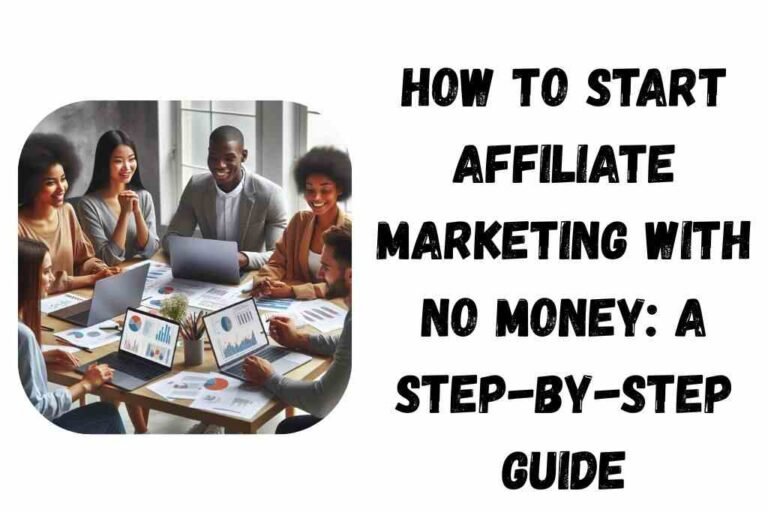What Is Affiliate Marketing & How Does It Work?
In the modern era of digital entrepreneurship, affiliate marketing has emerged as one of the most popular and accessible ways to earn money online. With minimal startup costs and virtually no inventory required, it provides an opportunity for individuals, bloggers, influencers, and even large companies to monetize content and traffic effectively.
But what exactly is affiliate marketing? How does it work, and how can someone get started? This comprehensive guide will answer all these questions and more.

1. Understanding Affiliate Marketing
Definition
Affiliate marketing is a performance-based marketing strategy where individuals (affiliates) earn a commission by promoting other people’s or companies’ products. The affiliate earns money each time they generate a sale, lead, or action through their unique affiliate link.
In simple terms, affiliate marketing is a way to get paid for recommending products or services.
The Main Parties Involved
There are typically four key players in affiliate marketing:
- The Merchant (or Product Creator): This could be a company, brand, or individual that creates the product. For example, Amazon, Nike, or even a software developer.
- The Affiliate (or Publisher): This is you—the person promoting the product to an audience. Affiliates can be bloggers, YouTubers, Instagram influencers, or even large media websites.
- The Consumer: These are the people who see the affiliate’s content, click on links, and (ideally) make purchases.
- The Affiliate Network (optional): Platforms like ClickBank, CJ Affiliate, or ShareASale act as intermediaries between merchants and affiliates, handling tracking, payments, and reporting.
2. How Affiliate Marketing Works (Step-by-Step)
Let’s break down the typical flow of affiliate marketing into actionable steps:
Step 1: Affiliate Joins a Program
Affiliates must first find and join an affiliate program. These are usually offered by companies directly or through affiliate networks.
Example: Joining the Amazon Associates Program to promote products from Amazon.
Step 2: The Affiliate Gets a Unique Link
After approval, the affiliate receives a unique tracking link (called an affiliate link) to promote the product or service.
This link contains the affiliate’s ID or username, so any activity from that link can be tracked.
Step 3: Affiliate Promotes the Product
The affiliate shares the link through a blog post, YouTube video, social media, email newsletter, or any other platform. The goal is to drive targeted traffic to the product’s landing page.
Step 4: Consumer Clicks and Buys
When someone clicks the affiliate link, a cookie is stored on their browser (usually lasting 24 hours to 30 days). If they purchase within that window, the affiliate gets credit for the sale.
Step 5: Affiliate Earns a Commission
Once the sale is completed and confirmed, the affiliate receives a commission, usually a percentage of the sale or a fixed amount.
3. Types of Affiliate Marketing
Affiliate marketing is not one-size-fits-all. Here are the main types based on the level of involvement:
A. Unattached Affiliate Marketing
- No connection between the affiliate and the product
- Typically involves PPC (pay-per-click) advertising
- Little brand credibility, low conversion rates
B. Related Affiliate Marketing
- The affiliate has a niche-relevant platform
- Recommends products that align with their audience
- Builds trust but still at arm’s length
C. Involved Affiliate Marketing
- Strong endorsement from the affiliate
- Typically involves personal experience with the product
- High trust, higher conversions
4. Popular Affiliate Marketing Channels
1. Blogging
- Writing product reviews, tutorials, comparisons
- Great for SEO-driven traffic
- Example: “Top 10 Laptops for Students (2025 Edition)”
2. YouTube
- Product reviews and how-to videos
- Use affiliate links in the video description
- Example: Tech channels promoting gadgets or software
3. Social Media
- Instagram, TikTok, Twitter (X), and Facebook
- Best for visually appealing products
- Influencer-driven promotions
4. Email Marketing
- Newsletter recommendations
- Building a list of subscribers for repeated promotions
- Often high conversion due to direct relationship
5. Paid Advertising
- Google Ads, Facebook Ads, etc.
- Requires budget and ad experience
- Can scale quickly if done correctly
5. Affiliate Marketing Payment Models
There are different models by which affiliates can earn commissions:
1. Pay-Per-Sale (PPS)
- Most common model
- Affiliate gets a percentage of the sale
- Example: Amazon’s commission ranges from 1% to 10%
2. Pay-Per-Lead (PPL)
- Payment for generating a qualified lead
- Common in insurance, education, and finance sectors
3. Pay-Per-Click (PPC)
- Affiliate earns money based on the number of clicks generated
- Rare and mostly used for high-traffic campaigns
6. Examples of Successful Affiliate Programs
1. Amazon Associates
- Huge product selection
- Trusted by consumers
- Low commission rates, but high conversion
2. ShareASale
- Access to thousands of merchants
- Wide range of niches
3. ClickBank
- Focus on digital products (eBooks, courses)
- High commissions (up to 75%)
4. Commission Junction (CJ Affiliate)
- High-end brands and well-known companies
- Advanced reporting tools
5. Shopify Affiliate Program
- Promote Shopify’s eCommerce platform
- High commission per referral ($58–$2000 per signup)
7. Pros and Cons of Affiliate Marketing
Pros:
- Low barrier to entry: No product creation or inventory
- Passive income: Earn while you sleep
- Scalable: Promote multiple products
- Flexible: Work from anywhere
- Performance-based: You get out what you put in
Cons:
- Highly competitive: Popular niches are saturated
- Income variability: No guaranteed monthly income
- Dependence on algorithms: SEO, social media platforms can change
- Affiliate program policies: Can be changed or discontinued anytime
- Cookie duration limits: You may lose a commission if the user delays the purchase
8. Legal and Ethical Considerations
Disclosure
In many countries (like the U.S.), the FTC requires disclosure of affiliate links. Affiliates must clearly state that they may earn commissions.
Example:
“This post contains affiliate links. I may earn a small commission at no extra cost to you.”
Transparency
Always recommend products you believe in. Misleading promotions can damage credibility and violate program terms.
9. How to Get Started in Affiliate Marketing (Beginner’s Guide)
Step 1: Choose a Niche
Pick a niche that aligns with your interests, expertise, and market demand.
Examples:
- Tech gadgets
- Personal finance
- Fitness and health
- Parenting
- Travel
Step 2: Build a Platform
This could be a:
- Blog (WordPress or Medium)
- YouTube channel
- Instagram or TikTok account
- Email list
Step 3: Join Affiliate Programs
Apply to affiliate programs that match your niche. Look for good commission rates and solid reputation.
Step 4: Create Quality Content
Focus on creating value-driven content:
- Product reviews
- How-to guides
- Case studies
- Listicles
Step 5: Drive Traffic
Use SEO, social media, email, and paid ads to get traffic to your content and affiliate links.
Step 6: Track and Optimize
Use tools like:
- Google Analytics
- Affiliate dashboards
- Link shorteners and trackers (e.g., PrettyLinks)
Track what works and refine your strategy over time.
10. Tips for Success in Affiliate Marketing
- Focus on trust and authenticity
- Promote products you’ve used or believe in
- Provide real value to your audience
- Use multiple traffic sources
- Diversify income streams by joining multiple programs
- Stay updated with trends and algorithms
- Be patient and consistent—success takes time
11. The Future of Affiliate Marketing
Affiliate marketing is continually evolving. In the coming years, we can expect:
- AI-powered recommendations and content to personalize affiliate marketing
- Voice search optimization
- Influencer-driven affiliate marketing to grow
- Niche micro-influencers to dominate conversions
- Mobile-first strategies to become the norm
As more consumers seek authentic product recommendations and creators look for monetization options, affiliate marketing will only grow stronger.
Conclusion
Affiliate marketing is a powerful way to generate income by promoting products or services you believe in. With low risk and high potential, it has become a cornerstone of the digital economy.
Whether you’re a blogger, content creator, or just exploring ways to earn online, affiliate marketing offers a flexible, scalable, and rewarding opportunity—provided you’re willing to put in the effort and deliver genuine value.
Start small, stay consistent, and learn along the way. Affiliate marketing is not just about making money—it’s about building relationships, trust, and a long-term digital asset.


